By Jack D. Young, Early American Coppers (EAC) ……
In the previous installment, I discussed counterfeits struck from dies made from damaged and repaired genuine source coins, with many starting as holed examples. And in this installment, I will also review a holed example and the struck clones for a popular Liberty Seated variety, the 1854 Huge O quarter.
As always I will not only start with a certified “Dark Corner” example but will also show the probable genuine repaired source example from my collection.
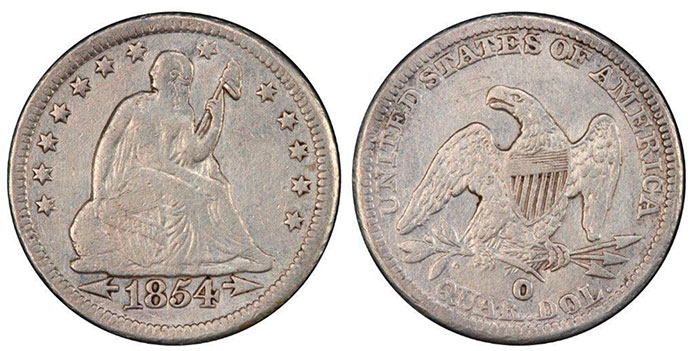
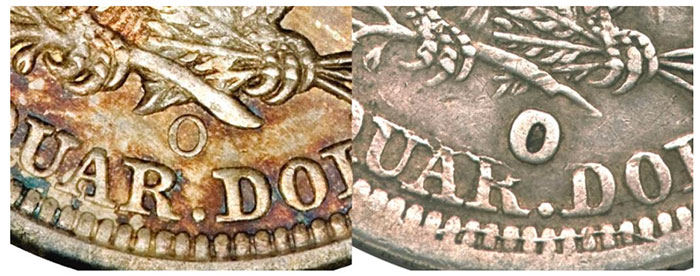
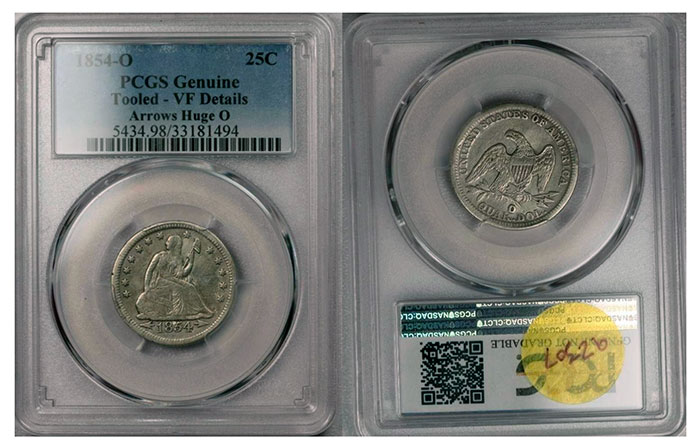
The holed genuine example was found in a past auction and certified as such; the “graffiti” included two large bisecting scratches on the obverse:
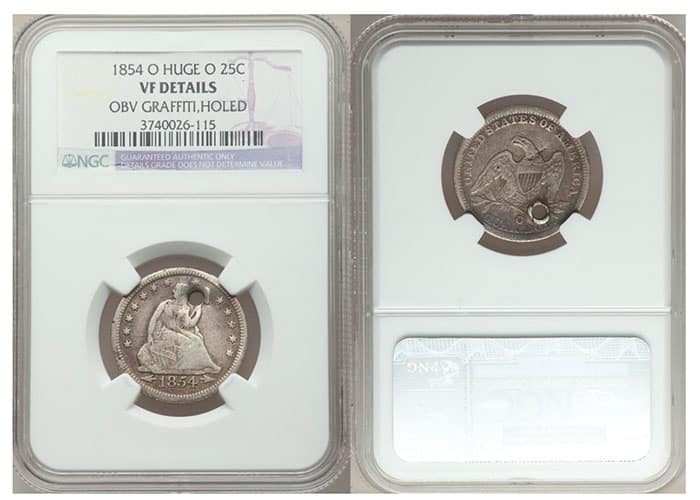
Comparison to the probable repaired source example illustrates the effects of the repairs made as well as common markers:
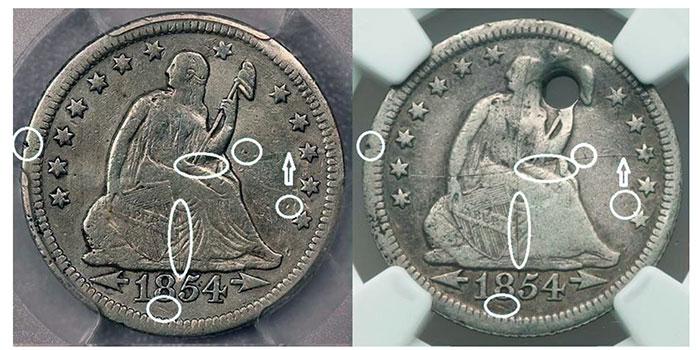

Comparison of the struck counterfeit to a genuine example illustrates the following differences:

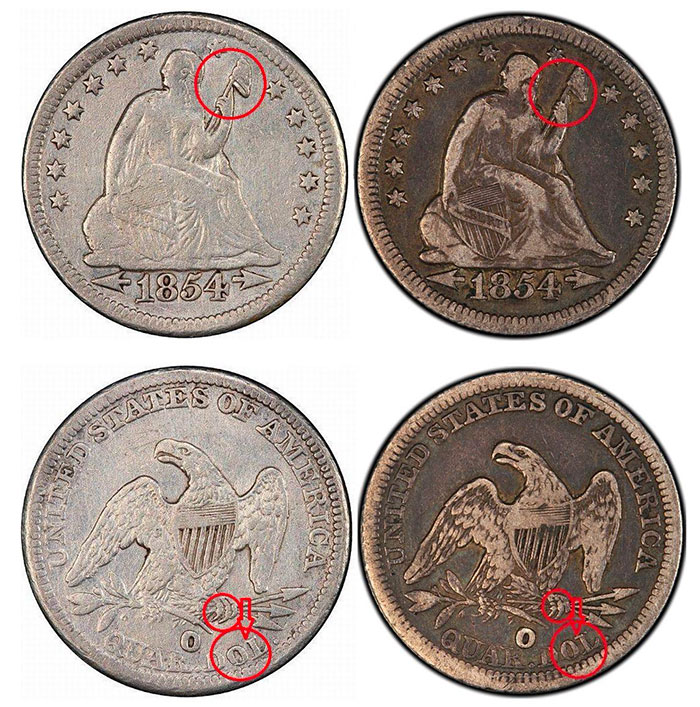
The cap, Liberty’s hand, the eagle’s left talons, and the “OL” of DOLLAR all had to be “tooled”/re-engraved to complete the repairs and show exactly in the struck counterfeits, but NOT in the genuine example!
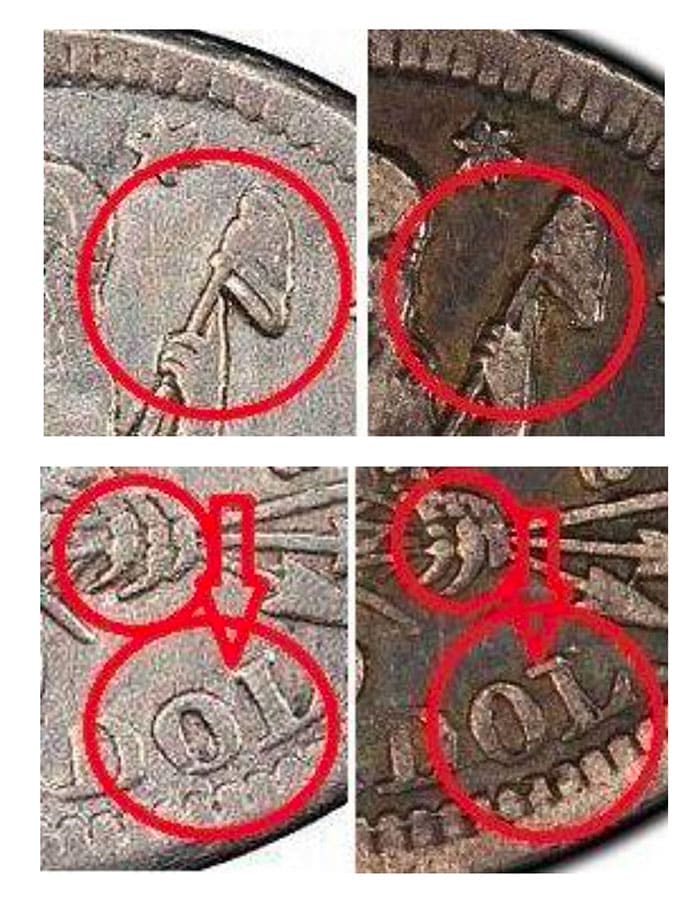
And of course, through continuing research, we found several raw examples of these counterfeits; more detailed information can be found in my original CoinWeek research article.
And a follow-up excerpt on the subject from Tom DeLorey’s article “Future of U.S. Coin Authentication” in the June/July issue of COINage magazine:
“Jack Young is also a pioneer of counterfeit detection: finding coins that have been copied from genuine but damaged coins that have been mechanically repaired before they were copied onto counterfeit dies. The advantage to the counterfeiters of this technique is that it gives them a much wider population of coins to copy and at a much reduced price.”
And again, should you see another 1854 Huge O Liberty Seated quarter “out there”, report it! There are several unaccounted for, including the certified one…
Best as always,
–Jack
MORE Articles on Counterfeit Coins by Jack D. Young





You provide interesting information regarding counterfeit specimens. However, the articles don’t seem to provide the basic rationale for when counterfeiting would be or should be profitable to engage. Particularly, for lower value coins, it would appear that the amount of time or effort to replicate would not be economical, particularly since numerous multiples cannot be forged without likely raising a fair degree of suspicion, if too many of a same type were out on the market at once.
Also, is this article stating such counterfeits actually passed certifications? It appears they did. If so, that would be a major blow to the confidence afforded to such certified coins and would make one even more careful upon potential purchase of especially higher end type examples.
Thanks.
Stanton, thank you for your comment. One of the requirements of each Dark Corner article is that each must have at least one counterfeit example of the type authenticated as genuine by a TPG and holdered as genuine.
I am not a coin collector, but while trying to identify coins, my Grandmother had collected, I have run across a holed Sitting Liberty quarter and thusly your articles. Some of this makes sense, some does not, some marks are identified, some are not. It is obvious that something has been done to try and repair the hole. How or where can I find out more information of what to do with this quarter?
Any advise you can offer would be greatly appreciated.
Please, contact me for pictures.